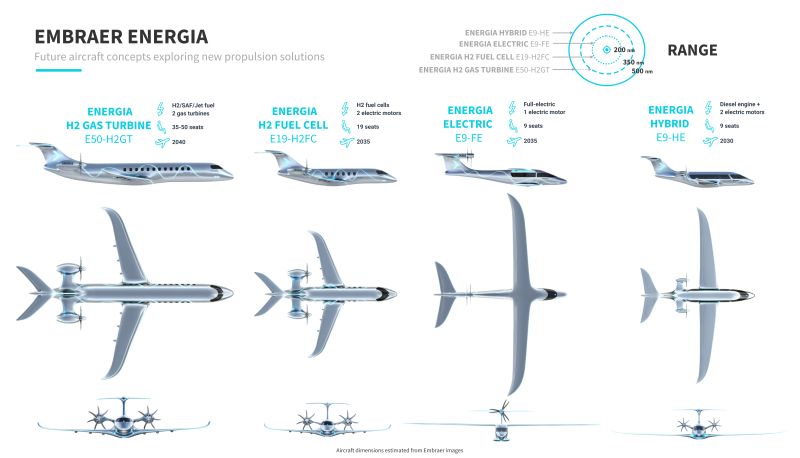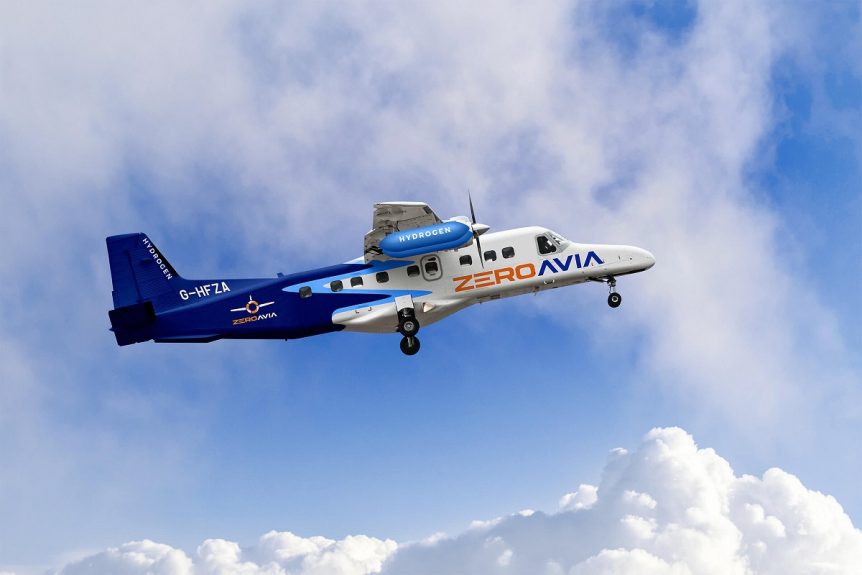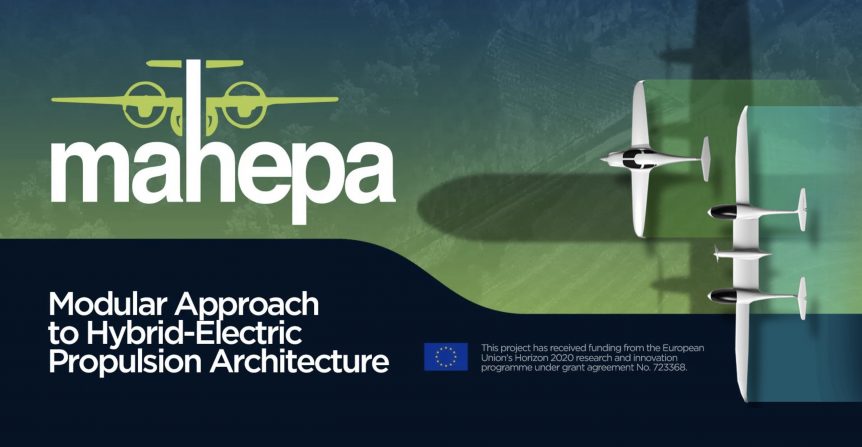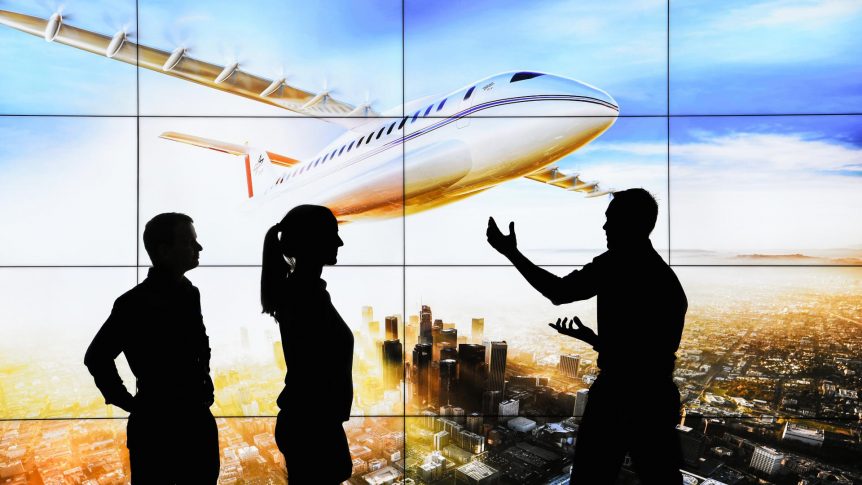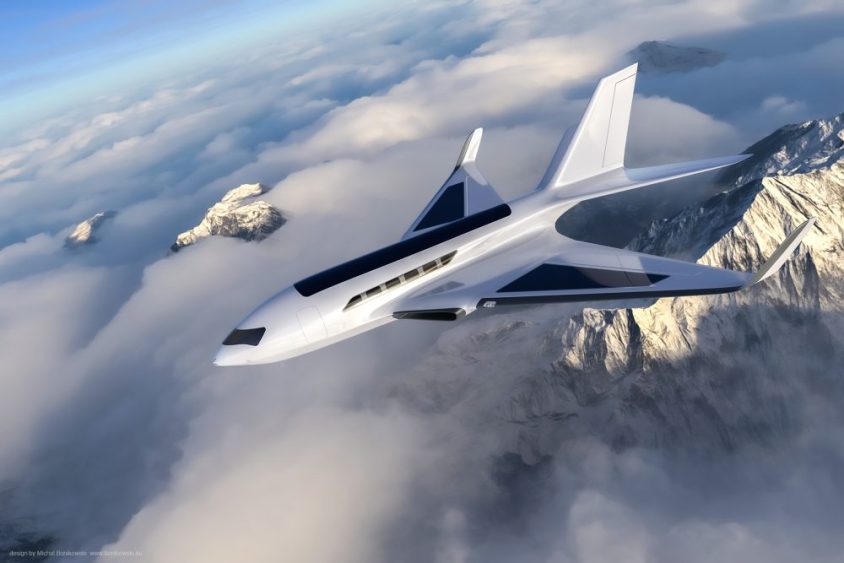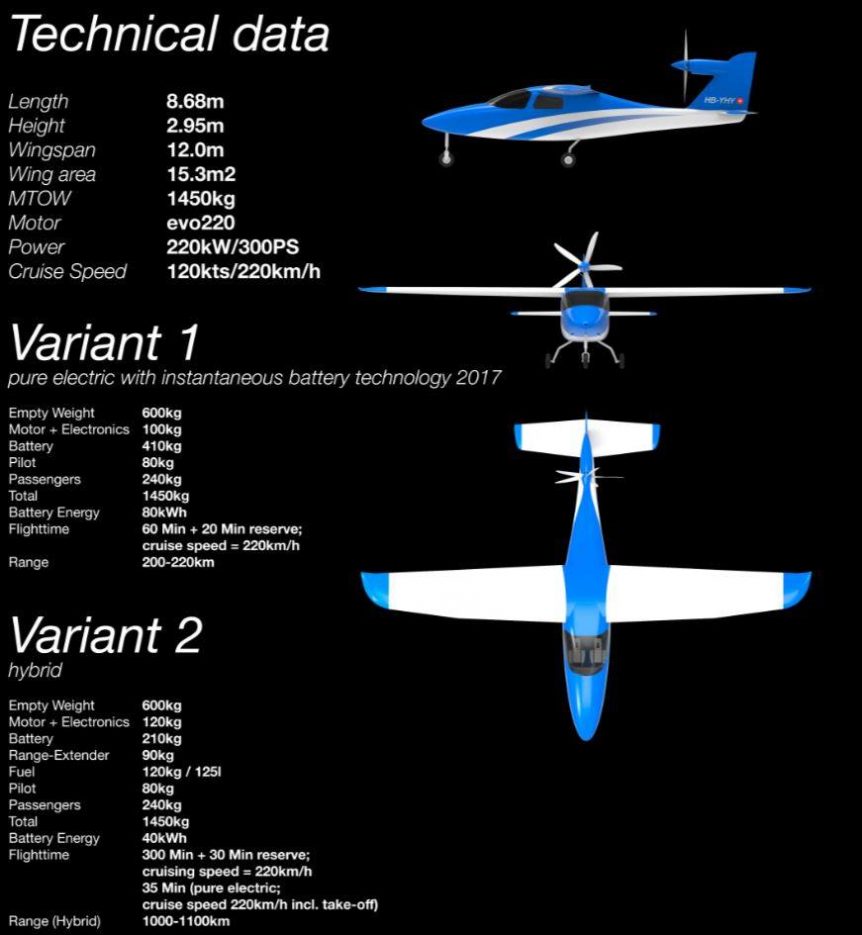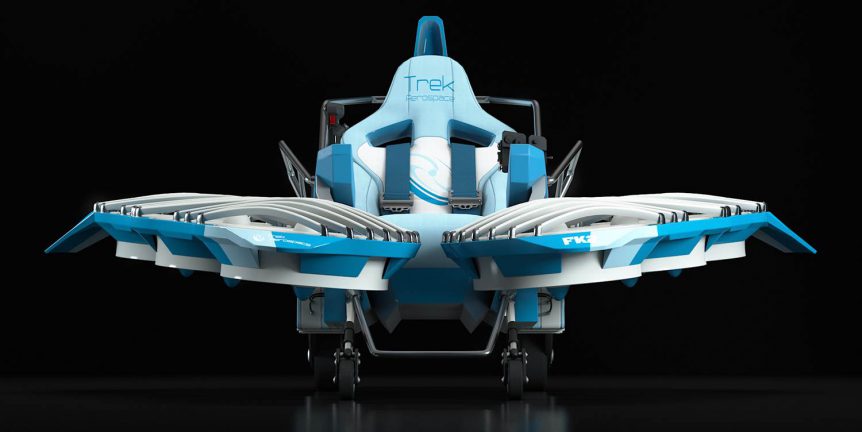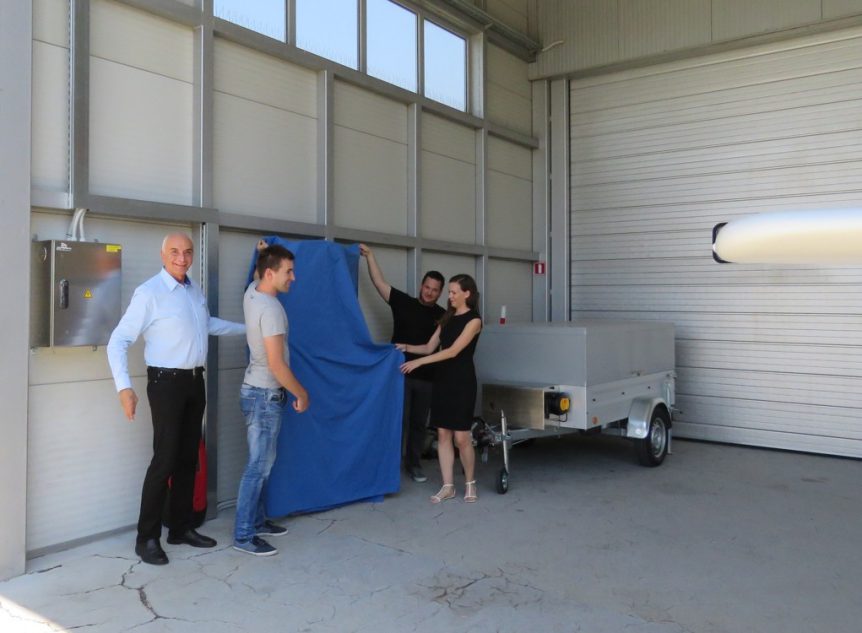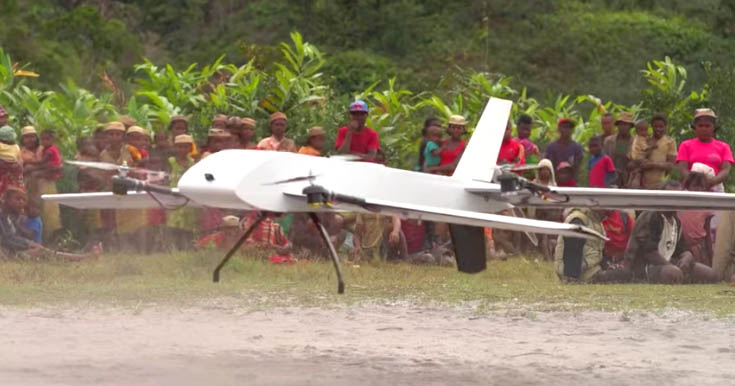Coming up with a new airplane is a daunting task – but Embraer announced four new designs this week. Ranging from nine to fifty passengers, Embraer’s Energia family are all electric or clean fuel redefinitions of regional air travel. Luis Carlos Alfonso, Senior VP of Engineering, Technology Development and Corporate Strategy presented them in front of a socially-distanced crowd in Brazil. The presentation, which sent virtual representations of the four craft flying out into the crowd, took place to coincide with COP26 (the Congress of Parties) being held in Glasgow, Scotland. Its choices of pure electric, hybrid-electric, hydrogen-electric, and in its 50-passenger model, hydrogen or SAF (Sustainable Aviation Fuel) driving turbine engines are all moving toward a “net-zero” goal. Two for Nine The two nine-passenger airplanes vary considerably. One is high-wing, with a pair of vertical tail-mounted motors driving contra-rotating propellers in full-electric mode. The other is a low-wing type, with twin electric motors on the rear flanks of the …
Going Big and Bigger with Hydrogen
Two companies promoting hydrogen power for aircraft are upsizing their aspirations, with aircraft hauling four to up to 40 passengers. Both have ambitious timelines. ZeroAvia, operating in Hollister, California and Cirencester, England has been flying a Piper Malibu demonstrator, but anticipates flying a 10 to 20 passenger Dornier by 2024. It would expand that to a 50-passenger craft by 2026. H2Fly in Germany has been flying their Pipistrel-designed HY4 for several years and through six generations. The firm looks forward to taking incremental steps toward a 40-passenger regional airliner by 2030. ZeroAvia ZeroAvia reports on troubling trends in aviation’s contribution to greenhouse gases, but follows with a possible solution. According to their web site, aviation accounts for over 12 percent of total transportation emissions, and may double that by 2050. High altitude contrails mean aviation emissions have two to four times the effect of ground source emissions. Regulators want drastic changes. The European Union mandates a one quarter the CO2 …
MAHEPA and HY4 Go High
MAHEPA (Modular Aproach to Hybrid-Electric Propulsion Architecture) is a European Union project to build emission-free aircraft. A public flight of Pipistrel’s HY4 hydrogen-powered, four-seat aircraft was the latest demonstration of the group’s progress. Challenging Objectives Overall, MAHEPA hopes to accomplish five objectives: Advancing the fuel-driven serial hybrid-electric Powertrain which uses a lightweight internal combustion engine (ICE), capable of running multiple fuels as the power generation module. Advancing the reliability of zero-emission serial hybrid-electric powertrain which uses a Proton Exchange Membrane (PEM) Hydrogen Fuel Cell (FC) as the power generation module. Advancing new airborne qualified, lightweight, high-power density components such as a 200 kW+ electric motor, a 100 kW+ generator and improved power electronics using Silicon Carbide (SiC) technology to increase efficiency of power transmission due to decreased switching losses. Developing “common building blocks” solutions also for different aircraft configurations, enabling the proliferation of powertrain modules between various aircraft. Gathering, analyzing and comparing in-flight performance and emission data in order to …
DLR’s Future Visions
One Size Does Not Fit All DLR (Deutsches Zentrum für Luft- und Raumfahrt or German Aerospace Center) and the German Aerospace Industries Association (Bundesverband der Deutschen Luft- und Raumfahrtindustrie; BDLI) present future visions of electric aircraft. These range from a four-seat hydrogen-powered repurposed Pipistrel that nine years ago won the NASA Green Flight Challenge to large, multiple propeller, medium-range airliners. Their White Paper, “Zero Emission Aviation – Emissionsfreies Fliegen” (unfortunately available only in German) promotes the promise of “energy transition in air transport, with the goal of zero emissions,” and claims this is “possible by mid-century but requires a considerable increase in innovation.” Rolf Henke, the member of the DLR Executive Board responsible for aeronautics research and technology, explains, “The time has come to start a new chapter in aviation. Our white paper shows the path to emission-free flying for the ‘Green Deal’ in aviation, which will lead to new technologies, attractive high-tech jobs, fascinating products and the promotion of …
Flying the Atlantic Electrically – The Freedom Flight Prize
It almost stops your editor in his tracks when he reflects that 93 years ago, Charles Lindbergh crossed the Atlantic in his Spirit of St. Louis. Even more astounding, competitors may win the Freedom Flight Prize by the 100th anniversary of that flight by making a cross-Atlantic and return flight in a 100-passenger, all-electric airliner. Carbon Footprint Ltd. Lindbergh’s plane, custom built but derived from a Ryan M-1 mail plane, cost $10,580 ($158,357 in 2019 dollars) and earned the $25,000 Orteig Prize. Now, an organization in England, “Carbon Footprint Ltd. has launched a competition to encourage sustainable passenger flight. It has created the Freedom Flight Prize, a competition focused on crossing the Atlantic Ocean 100-percent powered by renewable energy — with seating for 100. The first to do so will win the prize, which is expected to be worth millions of British pounds by the time there’s a winner,” according to Cleantechnica.com. “The competition is open to manufacturers, research/academic groups and inventors to …
The Villiger Traveler Updated
Urs Villiger flew his Traveler TR230 four-seat touring craft about 10 years ago. He started revising the Cessna-like vehicle two years ago, turning it into a more aerodynamic and economical machine. His changes turned the Traveler into a hybrid aircraft and relocated the propeller to the vertical stabilizer. Reflecting professor Dipl.-Ing. Rudolf Voit-Nitschmann’s configurations he developed for Icare II and e-Genius, the low-drag placement of the drive motor near the top of the vertical fin confines the added drag caused by the propeller’s acceleration of air over the aircraft’s skin to the top-most part of the fin and rudder. Compare the area exposed to propeller blast to that of a conventional nose-mounted engine “tractor” type aircraft. On static display at this September’s Smart Flyer Challenge in Grenchen, Switzerland, the newly revised Traveler showed a streamlined nose fairing that holds a gas turbine (reported from a Panavia Tornado fighter’s auxiliary power unit (APU) attached to the UQM motor/generator. That unit charges …
GoFly Announces First Round Prize Winners
Boeing just announced the ten winners of Phase I in its GoFly competition, in which entrants design, build and fly a “personal flying device.” As Boeing explains, contest rules are designed to enable entrants “To foster the development of safe, quiet, ultra-compact, near-VTOL personal flying devices capable of flying twenty miles while carrying a single person.” The list of partners and co-sponsors is impressive and includes virtually all major American aviation advocacy groups. As the Green Flight Challenge demonstrated seven years ago, prize money encourages a grand series of investments by individuals in hopes of winning a prize. In this case, 3,000 entries by 725 teams from 95 countries presented drawings and documents describing their proposed PFD, with a select 10 advancing to Phase II, which will require a demonstration of the proposed machine’s ability to perform as promised. “To be able to engage so many individuals from leading universities, major corporations and startups, and connect them through our community …
Verdego Aero – Another Variant on VTOL Travel
A Controversy for Starters Skeptics abound concerning the current spate of vertical takeoff and landing (VTOL) machines. The latest entry in the competition comes from the trio of Erik Lindbergh, Eric Bartsch, and Pat Anderson of Embry-Riddle Aeronautical University. Their Verdego eight-rotor machine looks a bit like the Airbus A3 Vahana, but has pusher, rather than puller, propellers on the rear wing. On his Linked In page, Bartsch jumps into an ongoing fray with his article, “The Inevitability of Short-Range Urban Aviation – Why I’m Betting Against the “Flying Uber” Skeptics.” It takes aim at the opposing point of view in “Going Direct: On the Insanity of Flying Ubers,” by Plane & Pilot writer Robert Goyer. To shorten the two arguments to their most primal levels, Eric Bartsch thinks sky taxis are coming and are inevitable. Goyer thinks the idea is insane and not supported by even basic physics or available mechanical systems. He doesn’t acknowledge an advantage to having …
Pipistrel Opens World’s First True Airplane Charging Station
On August 30. Pipistrel inaugurated the first electric charging station to fully warrant the name, charging one of their own Alpha Electro trainers. The project was co-financed by the Ministry of Education, Science and Sport and the European Union from the European Social Fund. Led by Pipistrel, the LECAD Laboratory, and the Academy of Fine Arts and Design, mentors and students developed and constructed a fully-functioning station. Technical characteristics of the charging station: – capable of charging two electric aircraft at the same time – current strength: 2 x 20 kW – charge speed: one hour to fully charge Alpha Electro – operating voltage 3f 400V AC – WiFi connection to the network As Pipistrel explains, “The goal of the project was the production and installation of a (public) charging station for electric airplanes, since in the filling of electric aircraft, in practice, the need for stationary charging has been shown.” Mentors and students from LECAD Laboratory, the Academy of …
Madagascar Medicine Meets the Green Flight Challenge
In the Small World category, the team leader of the 2011 Green Flight Challenge winning team is designing the next generation of a drone that can carry blood and stool samples from remote and otherwise inaccessible parts of Madagascar to a central laboratory where the samples can be analyzed. Jack Langelaan, Professor of Aerospace Engineering at Pennsylvania State University, is working with Vayu Aircraft to develop a vertical takeoff and landing machine specially crafted to meet the needs of the ValBio Centre. The video shows an early version of the drone, while pictures on Vayu’s web site depict a sleeker, more refined approach. The functionality for both machines would seem to be identical, but the styling for the projected future version is far more “marketable.” Dr. Peter Small, Founding Director of Stony Brook’s Global Health Institute, sees the flights as a win-win for drones and villagers. “The flights to and from villages in the Ifanadiana district [of Madagascar] ushers in …

